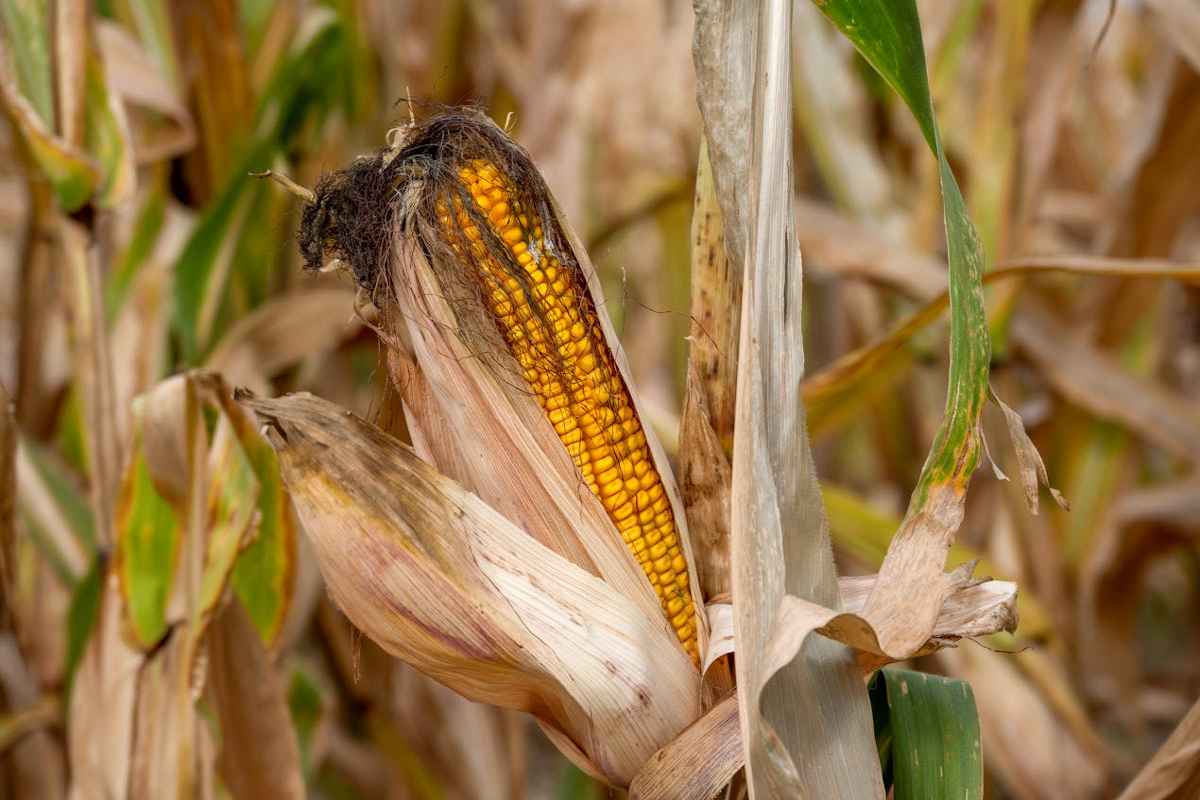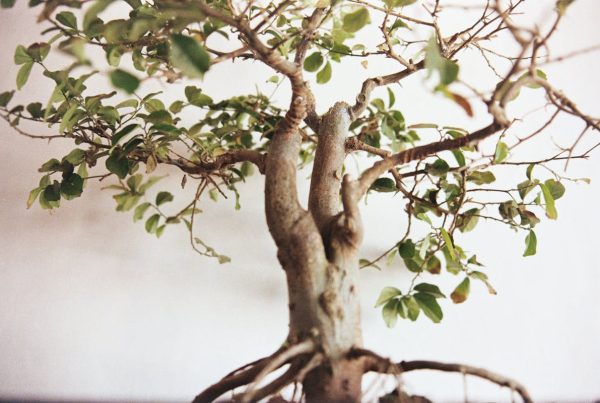Cornflower (Dracaena fragrans) is a perennial African tropical tree. It has been a popular houseplant in Europe since the mid-1800s and in the U.S. since the early 20th century. It develops from sturdy stems or canes at a gradual pace. They produce long, narrow, cornstalk-like leaves that grow upwards. This growth pattern also makes them resemble many different palms. So, they are sometimes called “false palms.” They are good houseplants. They are tall and narrow, reaching four to six feet in containers. However, if you have cats or dogs, avoid this plant. Dracaena is toxic to both. Like other dracaenas, these plants need little care. Just find the right conditions. Below we share our care guide so you can have a thriving corn plant.
Spruce / Cara Cormack
Where to place:
Put your corn plant in bright, indirect light. Avoid direct sunlight.
How to water:
Keep the soil evenly moist, but not soggy during the growing season, from spring to fall. In autumn and winter, reduce the water.
Recommended soil type for growing your corn plant is rich and well-drained. At home, corn plants are usually grown in large pots. They are tropical plants that need controlled weather.
You can put the wheat plants outside in the summer if they are in a sheltered place, a little shade. Bring them indoors once the temperatures start to drop into the 60s.
• Plant corn plants in rich soil in well-drained pots. • Place the wheat plants in bright and indirect light; avoid direct sunlight. Move corn plants away from drafts and heat. Protect them from cold windows, and air conditioning and heating fans. Organisms prefer a moist environment.
The ideal location for an indoor corn plant is near a window with filtered light. Little light will cause the leaves to lose color and can stunt the growth of the plant. Exposure to direct sunlight can burn the leaves of the plant and cause them to fade. Outside, the plant grows best in a shady place. A mixture of loose and friable potting soil is the best option for growing corn plants. Make sure the soil is well drained, as its roots cannot handle stagnant water. Maintain soil moisture at a consistent level during spring and autumn.
Reduce watering from late fall to winter. However, do not allow the soil to dry out completely. Soil that is too wet or too dry will cause plant health problems. Corn plants grow best at 15-24 °C. Avoid temps above 10 °C.
If you’ve moved your corn plants outside for the summer, bring them indoors before it gets above 10 °C.
Keep humidity at 40-50% to mimic their natural environment. To increase the humidity of the plant, use a humidifier or place the pot in a table filled with water and pebbles. Do not let the bottom of the pot touch the water. Corn plants prefer soil rich in organic matter. Use a balanced liquid fertilizer every two months in the growing season. Feed little, if at all, during winter.
• Dracaena fragrans ‘Massangeana’: this is the most common variety. It has a lemon-green yellow stripe down the center of the leaves. • Dracaena fragrans ‘Lindenii’: Its leaves have yellow edges, not a central stripe. • Dracaena fragrans ‘Victoria’: this variety is very like ‘Massangeana’. It has a yellow stripe down the center of its leaves. But, its leaves are smaller, wider, and almost triangular. It is rarely available in garden centers.
“Lemon Lime”: Dracaena fragrans. It has yellow-white striped leaves around a gray-green center. Dracaena fragrans ‘Limelight’: This cultivar has glossy yellow-green leaves. They turn lighter green with age.
The lower leaves of the wheat plant begin to yellow in about two to three years, the natural life of a leaf. Eliminate leaves that mar the tree’s appearance.
If the plant is too tall for your space, cut the tips of the trunk; new leaf buds appear near the cut. We tested over 10 pruners. This will help you choose the best one for your comfort and needs.
Each varies in value, cost and durability, so there is a choice for everyone. It is best to propagate corn plants in spring or summer. But, if you keep your plants in an air-conditioned room, you can propagate them any time.
The ideal time to propagate this plant is when it starts to grow taller than your room. You can create another plant by cutting off the top of the original parent plant. Also, cutting the top is a good way to renew the plant’s leaf growth. Top cutting or stem cutting is the best propagation method. Here’s how to do it:
1. Cut the top of the plant below the leaf line with clean hand pruning shears. Include a knot (round white lump on the trunk). For a trunk cut, take a piece of 20 cm.
2. Put the cutting in a pot of room-temperature water. Submerge half and leave half uncovered.
3. Position in a spot that receives direct sunlight and gentle heat. Examine the roots at the leaf nodes under the water. Also, check the leaves at the upper end.
4. Add water every few days as it evaporates. Every two weeks, change the water completely. This will stop algae and bacteria from growing.
5. After the trunk produces roots more than 1 inch long, place the rooted end in moist peat. Place in a warm, partially sunny place. Plant a cut stem in wet moss, then await leaf regeneration. It’s probably rooted. But, you can’t see the growth of the root like in a clear pot of water. So, you don’t know if it’s progressing. Propagation is more successful when the stem is rooted in water.
To promote germination, soak the seeds in room temperature water for three to five days. Sow two to three seeds in a small pot of moist seedling soil. Cover the seeds lightly with potting soil. Place the pot on a warm germination mat and cover with clean plastic film. Keep the soil temperature between 20 and 27°C under a grow light or bright indirect light. Soil moisture reaches optimal levels with a hint of dampness. If the soil is too wet, the seeds can rot.
When you have growth (this can take four to six weeks), remove the plastic. Transplant after the plant has developed two true leaves into a 3-inch pot with potting soil. Repot your corn plant every year or two. Use a container that’s 2 to 3 inches larger and deeper. Use fresh soil.
When you are ready to repot the plant, remove the loose soil around it and remove the plant from its base.
Put an inch or two of fresh soil in the bottom of the new container. Then, place the plant in it. Be careful not to damage its roots. Fill the space around the plant with fresh potting soil. Pack it with some space to spare. Ensure that the container has good drainage. Bring your dracaena indoors when it drops below 60 °F. If it’s in the ground, you can dig up the root ball. But, only if the plant is big enough for this. Then, pot it. If you go to an area colder than zone 10 and leave the plant in the ground, it will die. Before the first frost, you can take a stem cutting or cut off the top of the plant. Spread it indoors over the winter. In spring, after the frost threat has passed, take it back outside. Check plants for spider mites, thrips, and mealybugs. They are a common problem with many houseplants. These plants can make the leaves look damaged and unhealthy. You may also see small insects moving in the plants. Wipe plant leaves with a damp cloth to maintain their appearance and prevent pests.
Look for silk webs on your plants, which are often a sign of spider mites. Colors like red, yellow, green, and brown can change throughout the year. Since they are so small, you may need to hold a piece of white paper under the affected area. Then, touch it with a pencil to let the mites access it. You can see them with a magnifying glass.
Dracaena fragrans does not always bloom. But, with good conditions, and if the plant is over 5 years old, it can bloom 1 to 3 times a year. Keeping your corn plant indoors reduces the chances of flowering. The flowers emerge from the center of the whorl of the leaf and can reach 90 cm in length. The flowers resemble white, spike-shaped balls. As the name suggests, they smell sweet when in bloom. The aroma can resemble a combination of jasmine, lilac, honey and fresh grass. It blooms at sunset every night for about a month. Each flower falls in the light of day, making another flower to open the next evening.
Wheat is an easy house plant to care for if the growing conditions are suitable. If any of these conditions are not met, you may have some of the following problems. If your corn leaves turn yellow or black, it may be a problem other than leaf rot. It occurs during the leaf’s life cycle. The most likely causes are: too much sun (brown), too much water (yellow then brown), or a lack of nutrients (yellow). Re-evaluate the plant’s light, soil moisture and fertilization schedule and adjust accordingly. Leaf curl on your wheat plant may be due to over or under watering, or tap water with too many minerals. (Leave the water for an hour before use to let elements like chlorine dissolve.) Excessive heat or dry air can also cause it. So, check that the plant is not near a heating pipe or getting too much light. If your corn plant’s leaves suddenly drop, check for causes. It could be extreme heat or cold, root rot, or lack of water. This applies even if the drop happens slowly and unexpectedly.
Corn plants that receive too little water or too much dry air may have dry leaf tips and edges. Add a humidifier to increase humidity. Increase the water of the plant, but do not allow the soil to dry out. Bitterness of the edges can also be caused by too much fertilizer or fluoride in the water. Use distilled water to prevent the tips of the leaves from burning.
Too much water and poor drainage can cause sudden loss of leaves or root rot. Make sure the soil is well drained and that the pot has several drainage holes. If you put corn plants in the sun, your dracaena can develop dry spots and stripes on the leaves. Move the plant to a place with less direct sunlight. If the lower half of the wheat plant is black or smells bad, it likely has soft rot, an incurable bacterial infection. The plant will start to look and smell like it’s rotting. We cannot recover the plant and must discard it.
Frequently asked Questions
Corn plants are easy to care for once their needs for climate, sun and water are met. Maintain these conditions and your plant can live for many years.
Corn plant is a slow to medium growing plant. Its conditions are hard to improve. Its growth slows if they’re not perfect.
Under the right conditions, Dracaena fragrans can live.
Corn is not related to sweet corn, a stem vegetable grown for food. They are only similar in name.
Corn plants can grow in water. Leave a stem that propagates in the water. It must be past the point where the roots are 1 inch long and have become aquatic roots, drawing oxygen from the water.



